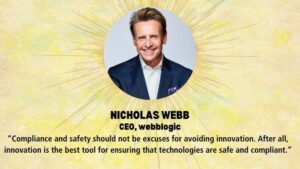3 Ways to Reimagine Medical Device Packaging Development
Be an innovation superstar by avoiding common pitfalls and embracing smart risks.

ANDRII YALANSKYI / ISTOCK VIA GETTY IMAGES PLUS
At a Glance
- Avoid creating a punitive “risk-centric” culture; incentivize bold innovation to drive value for the organization.
- Embrace innovation to enhance compliance, safety, and risk reduction, ensuring technologies remain safe and compliant.
- Use opportunity-centered evaluation methods and foster a culture that rewards boldness to become an innovation superstar.
Medical device packaging design and development are set to rapidly evolve as we transition into a state of hyper-change and speed. Unfortunately, several cultural pitfalls have put many package designers and developers on a slow conveyor belt of incremental innovation. Common pitfalls in the design and development of medical packaging include:
• Career pathway management.
Organizations often create a culture of “risk-centrism” that disincentivizes innovation by creating a punitive environment. This culture rewards incrementalism and complacency rather than innovation and smart risk-taking. Consequently, stakeholders manage their job security and career pathways conservatively.
However, forward-thinking organizations incentivize packaging developers with meaningful rewards for being brave and bold in developing innovations that deliver value to their organization and customers.

• Brave and bold is bad.
In a highly regulated industry, being brave and bold might seem irrelevant due to the potential for mistakes causing harm. However, great innovations should enhance compliance, safety, and risk reduction. Compliance and safety should not be excuses for avoiding innovation. After all, innovation is the best tool for ensuring that technologies are safe and compliant.
• Innovation isn’t incremental.
Some organizations believe that innovation should be incremental and slow. They assume packaging will look virtually the same in five to 10 years. However, with impending regulatory mandates, new user requirements, and other rapidly moving factors, packaging will look much different.
The future of packaging actually includes a movement towards the elimination of packaging. Some of this will be achieved through Point of Usage Manufacturing (POUM), 3D printing, integrated product and packaging design, “resposables” (reusable semi disposables), and “zero-net-design” innovations, that will deliver a zero net impact on the environment, and cost.
The biggest risk today is not embracing the blur of change and becoming a bold innovator.
How to be an innovation superstar
So how do the best packaging designers and developers become innovation superstars? Here are three ways:
1. Innovation superstars know that better insights drive better innovations.
Surveys, questionnaires, and other voice-of-the-customer (VOC) methods won’t provide the insights needed for smart risks. The biggest risk for package designers is using erroneous or fractional data. We need to go beyond outdated methods to control risk while developing world-class packaging solutions. Reimagine how you gain market, usage, and design insights to ensure they are comprehensive and accurate. Use best-in-class solutions and technologies that help instruct better design.
2. Innovation superstars embrace cultural transformation.
It’s impossible to create great innovations in a culture focused solely on risk and compliance. The best way to build a culture of innovation is to communicate that developing brave innovations within compliance and safety confines is vital. Some organizations reward failed innovations to show that even unsuccessful technologies are part of the discovery process.
Packaging Innovation Centers (PIC), composed of passionate team members, provide resources to manage brave innovation while thoughtfully managing risk. These centers include a communication strategy that constantly highlights the importance of innovation and invites participation in innovation challenges. They also manage the innovation pipeline to ensure great ideas reach market deployment fast.
3. Innovation superstars signal the end of risk-centric analysis.
Traditional staged methods to evaluate the business use case of a product or package design have been used to justify inaction. Most organizations still use methods from the 1970s. The best way to give your innovation a fighting chance is to use opportunity-centered evaluation methods that assess the opportunity rather than focusing solely on risk.
A triangular model evaluates three key elements:
1. The innovation’s ability to deliver value to the customer and ecosystem.
2. The ability to predictably manufacture the product within a targeted price point.
3. The ability to market the packaging solution’s benefits to the end user, and buyer.
Triangular models ask how to make it win, unlike Staged methods ask the question what bad things will happen if we develop this packaging solution. This is not to say that we don’t take a sober approach towards the realities of risk and compliance. It simply can’t be the centerpiece of our analysis.
The bottom line.
To transition from Package Developer to Packaging Innovation Superstar, you need better insights than current methods allow. Transform your culture to reward boldness and eliminate disincentives that act as cultural antibodies preventing innovation. Move beyond stage methods of technology assessment to a balanced approach that focuses on opportunities rather than risks.
It’s important to remember that product package designers and developers who create world-class innovations will have unlimited career opportunities. Conversely, staying under the radar to avoid risks often hinders career growth.
“… unleash your creative genius to develop amazing innovations that will benefit our industry for decades to come.”
We all entered this field to make a significant impact on our customers, patients, and the world. My advice is to unleash your creative genius to develop amazing innovations that will benefit our industry for decades to come.
article source: MDDI









